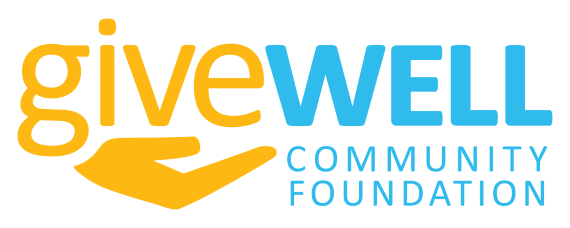AI and charitable planning, “catch up” contributions to boost IRA philanthropy, and the latest news
Advising clients about AI’s impact on charitable giving
- For clients who serve on boards of directors of nonprofits or work for a nonprofit, AI could mean significant advancements in fundraising capabilities. From research to communications, generative AI could help fundraisers get their work done, which would be a welcome development in a profession that has been under stress due to a shortage of professionals and a challenging fundraising environment.
- Some of your clients may be investing in AI companies. Pay close attention to this. While certainly not all AI ventures will make it, some AI startups will likely be very successful, creating huge financial gains for their shareholders. Talk with your clients about contributing shares of these companies to their donor advised or other funds at GiveWell Community Foundation (GWCF). Upon an eventual exit, the shares held by a donor advised fund will not be subject to capital gains tax, allowing your client to support their favorite nonprofit organizations much more significantly than if the client waits to sell the shares and transfer the proceeds (minus the tax hit) to a charitable fund.
- While AI can certainly help your clients research their favorite nonprofit organization, and similarly will also play a role in helping nonprofits fundraise and carry out their missions, it’s important to remember that right now, in AI’s early stages, most AI results are still only as good as the prompts and instructions provided by humans. The key to getting the right answers is to ask the right questions, and sometimes asking the right questions is the hardest part.
As always, please reach out to GWCF for help as you serve your charitable clients. Our team has deep, personal knowledge and experience in all areas of charitable giving, from tax deductibility rules, to planned giving techniques, to understanding the needs of our community and how your clients can make a difference in the causes they care about. We welcome the opportunity for human interaction as that becomes even more of a rarity!

How “catch-up” contributions can boost clients’ giving
- Taxable income “suppression” in the year of the contribution.
- Tax-deferred growth until distribution — and now not required until age 73 of the account owner.
- Ease of changing a beneficiary designation to name the client’s fund at GWCF, which will remove the assets from the client’s taxable estate at death and avoid income tax.
- With retirement plans flowing to a charitable organization, leaning into highly-appreciated stock and other property at stepped-up values to make bequests to family or others, effectively erasing the unrealized capital gains for the recipients.
Make sure your charitable clients don’t overlook an important tool in retirement savings maximization (and ultimately charitable giving) known as the “catch-up” contribution. This is the “extra” money that retirement savers aged 50 or older can stash away into their retirement accounts—and into more than one account as applicable. Advisors and clients might better think of this as a bonus opportunity rather than a “catch-up,” especially if a client has been maximizing their retirement savings all along. Additionally, of course, the catch-up contribution allowance helps a client make up for years when retirement contributions fell short due to earnings or savings interruptions due to layoffs, caregiving, high-expense years, or similar circumstances. Thanks to the SECURE Act, catch-up contributions have created even more buzz about opportunities for retirement savings, especially as the rules are set to shift in 2024 and 2025. In any event, the effects can be impactful. For example, an extra $1,000 deposited annually from age 50 through 65 earning 6% on average could potentially deliver an extra $27,000 in retirement income at age 65. From a charitable giving perspective, the greater the IRA balance, the more opportunity there is for a client to give later to a fund at GWCF. What’s more, higher IRA balances can motivate your clients to deploy a Qualified Charitable Distribution strategy, with its many benefits:
- Beginning at age 70½, your client can make Qualified Charitable Distributions (QCDs) up to $100,000 in 2023 ($200,000 for married couples) and indexed for inflation beginning in 2024.
- QCD assets can be distributed to a designated or field-of-interest fund at GWCF or to another qualifying public charity.
- QCDs can count toward Required Minimum Distributions for clients who are required to take them.
All in all, IRAs are the most prolific retirement savings vehicle in the United States, accounting for nearly 33% of the $33 trillion of total retirement assets as of December 2022. But regardless of the retirement savings vehicle, contribution maximization—and aided by so-called catch-up contributions—is a winning strategy for wealth building, family gifting, and charitable giving.

Our reading selections
Just reported in June by Giving USA was a rare decline, 3.4%, in charitable giving by Americans in 2022. Though giving totaled nearly $500 billion, officials cited high inflation and the stock market’s pullback as reasons for the decline from $516 billion of total giving in 2021. Despite households’ financial pressures, 64% of giving came from individual donors. Dig into this compelling (and free!) infographic for a comprehensive look at the state of philanthropy in America.
NIL collectives: DOA?
NIL collectives have been all the rage in some higher education circles, but that may be changing. Contributions to these entities may not be tax-deductible after all, according to the IRS in a May 23, 2023, memo. This development serves as an excellent reminder that private benefit and charitable tax exemptions do not mix well.
Even more reasons to talk about philanthropy with your clients
If philanthropy is not a regular topic of your client conversations, you may be missing out. Not only can it be an easy icebreaker, but also studies have documented strong organic client growth through such conversations. And as this article points out, the combination of client dissatisfaction, wealth transfer, and the affluence of future generations spells o-p-p-o-r-t-u-n-i-t-y for advisors.

Ready to get started?
You know your clients. We know philanthropy. Together we can ensure your clients make the best decisions for making a difference in the community.

Lori Martini
Vice President/CPO
863-683-3131
lmartini@givecf.org
